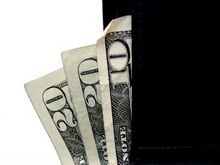 Can you get through a month with only $250?
Can you get through a month with only $250?
I could not. I know for a fact that my family spends at the least $100 a week on food and non necessities. At worst, we might spend $200 a week. This does not include housing expenses, savings, and insurance payments.
Monthly Budget Experiment #1
I just read an article at Small Notebook where they spent the month of July (both this year and last) with a budget of only $250.
Of course, that $250 did not include money spent on tithes and other gifts, rent, insurance, bills, health expenses, work expenses, savings, and investments.
The items that were being limited were food, gas, clothing, coffee, household necessities, and entertainment.
The goal of the experiment turned yearly tradition was “to stretch ourselves to become more mindful and disciplined about the money we spend, and to save some extra money in the process.”
In the end, the bulk of the money was spent on food and gasoline. They managed to splurge a bit at the end of the month on coffee. So basically, they were able to do without buying new items for the home and clothing for a month. They also forced themselves to eat foods they already had in the pantry and freezer. Writing about their progress has inspired many others to do the same.
This group was not alone…
Monthly Budget Experiment #2
A group of people at MSN Money’s Your Money message board chose a shorter month, February, to have a "buy nothing month".
They were allowed to purchase necessities, and each was free to decide what a necessity was.
Typical savings ranged from $200 to $500.
The experiment was meant to make people look at what they really need and what they do not need, while ultimately examining their relationship with money.
What About The Typical American Family?
After giving these 2 budget experiments some thought, I came to realize that many people only have $250 or less per month to spend on these items after their bills are paid. With a typical family of 4 living at the poverty rate bringing home just $1,750 per month and half of that going toward clothing expenses, they are lucky to have $250 left to buy food, clothing, and other necessities.
The typical family does not have a pre-stocked pantry to start the month with. They need to purchase all of their food with this amount. The typical family does not have a full wardrobe from which they can dress; they are likely in need of new shoes, or slacks, or something at all times. The typical family does not start the month with gasoline in their car; it is usually somewhere between 1/4-tank and empty.
My purpose is not to diminish the efforts of those who got through the month of July with only $250 to spend food, clothes, and personal items, or those who managed to save hundreds of dollars by only buying necessities.
My aim here is to point out that while doing such an experiment, one should consider the families that don’t have that much to spend and those who only have that much to get by, with absolutely no built up reserves.
My hope is that when people spend a month cutting back and endeavoring to cut expenses they will take the money they saved and give some of it to those who live this experiment on a monthly basis.



